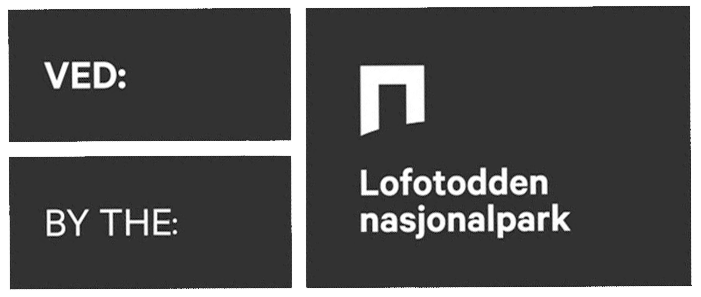Taken from Valentine Warner’s latest book ‘The Consolation Of Food’ published by Pavilion.
Where the fresh wind blows white horses towards sharp black mountains that fall steeply to the sea, where giant cod swim deep below the sharp eyes of circling sea eagles, the moss-carpeted Lofoten islands sit in the far northerly west of Norway below Tromsø, ninety-five miles north of the Arctic Circle.
I have long felt an inexplicable connection with Scandinavia. As a boy, I sat wide eyed, listening to tales of Viking ravages and splintering monastery doors, the chronicles of the violent Norse gods and stories of trolls. And this interest only grew, alongside my love for nature, the forest and all things made of wood. I longed to see this cold-climate wilderness of pines, lichen-covered granite, lakes, huts and axes, and silently asked that I might one day visit.
My father had always said to me, in one way or another, ‘Quietly send your desires towards the stars, as true intention will be answered.’
It appears the astral clockwork answered this desire; in 2012 I ended up filming Valentine Warner Eats Scandinavia. This ten-part series, across Denmark, Sweden and Norway, fishing, hunting, drinking birch sap and cooking reindeer heart in -40°C/-40°F, was aired on UKTV, most particularly to an audience of Ingunn Rassmussen and her husband Trond Melhus, far away in Korea.
A year later, Ingunn sent me an email saying she had watched this series and others I’d made, and thought it right I should come and see her hotel, Holmen Lofoten, to get a sense of the place and have a chat. She wanted the hotel to be something more out of the ordinary.
Time poor, I could ill afford a jolly, but on ringing her up, liked her bright voice and understood her to be an interesting, inquisitive and humorous woman. And so, acting on a hunch, I said yes.
A few months later, after a staggeringly beautiful drive through the fjords, I arrived in a town called Å at a collection of wooden fishermen’s huts or rorbuer, ‘ro’ (row) and ‘bu’ (live), sitting higgledy-piggledy at the water’s edge. It was love at first sight.
But for a roaring waterfall tipping foam into deep space, this was a hotel on the edge of the world. In this clean air, the overwhelming and invigorating elements chased urban worries from out my head and across the sea. ‘I belong here,’ I felt.
I have yet to swab my lineage but, as a lover of log piles and the cold, were I to find Nordic blood flowing within, it would come as little surprise. Cooking in Lofoten is a joy; the islands are rich in ingredients which, at the same time, require you to think on your feet every day. Nature and the weather here dictate a more immediate menu, as does what may be bought in from the mainland … or not.
Under the constant light show of the midnight sun, or the inky short days of winter with the aurora trembling overhead, I have spent many happy hours in the kitchen at Holmen, braising the mountain hares, smoking the white-trousered ptarmigan brought in by hunters, or preparing cod the size of Labradors. The seas are rich with muscular carpets of halibut, coley, haddock, pollack and summer mackerel.
As the growth of yellow, scarlet and purple berries erupts in summertime, the islands turn a bright emerald green. The lakes provide the most beautiful species of trout, the delicate-tasting char with its green and orange colouring. From surrounding small plots and gardens, astonishing strawberries, the colour of blood, and vegetables ripened under the unceasing gaze of a midnight sun will bring a smile with their flavour.
Before pre-ordering any anchovies, Dijon mustard or spices, it is best to stand still and look at what is already here. Soon all manner of possibilities arrive, whether it means picking the green juniper in the car park, pulling yellow-footed mushrooms from under a nearby cluster of spruce, collecting seaweed from the shoreline or local goats’ cheese from the shop.
With an eye towards more conventional ingredients, the Lofoten lamb, dare I say it, is the best I’ve ever eaten. They are more feral than domesticated, spending their lives in the high mountains nibbling all manner of herbs and plants. Although delicious, their very pale and tender meat is minimal, kept to size by the elements in the same way the dwarf birches are stunted by the cold ocean gales. Their shoulders are barely larger than a turkey leg, but oh! the taste. Oof!
Cockles, their meat the size of sweetbreads, litter certain shallow bays, while the bottom of the sea clicks with crawling brown crabs.
But Lofoten is most famous for its cod. Around April the skrei, or ‘snow cod’ as I prefer to call them, turn up in these rich waters to feed and spawn until May. Testament to this important industry is a small railtrack that runs from the jetty at Holmen. So great were the catches that the fishing boats, laden low and slow in the water from the weight of their haul, would unload the cod into a trolley that could be pushed on the rails with ease up to the cleaning area.
The skrei is seemingly identical to our own cod, but these migratory fish reach remarkable sizes when compared. The largest Lofoten specimen in 2017 was 52 kg/115 lb. A good UK fish would be only 15 kg/33 lb.
Fishing for them is a thrill, especially in a considerable sea swell with Odin shouting wind and hail coming down like Thor’s hammer. Exhausting reel-cranking and colossal fish was warmly rewarded with dinner and aquavit … a lot of aquavit. Cleaning the skrei in the harbour with sharp knives, amid a lot of blood, there is something extremely visceral about remote Norway. That people lived on these shores so long ago, ravaged by the weather, hardship and the seas, with so many different ways to die, you can see why their gods were so fearsome, why the Norwegians are so open and practical. It’s hard to shock a Norwegian.
Cooked by Ingunn’s extended family, my first Skrei dinner was memorable. The roes were wrapped in greaseproof paper with bay leaves and black pepper, bound in string, and poached. The fresh liver was rendered with onion, then poured over waxy, yellow boiled potatoes, seasoned with salt – not to be associated with the cod liver oil from a bottle that I twisted and writhed to avoid as a child.
The meat was steamed, and all parts served together with needless to say … more aquavit. The warmth of the fire, the timber-framed room, candles, the friendly volume of company, and it was a dinner I will never forget.
Many guests came, including a Mexican blacksmith from Oaxaca doubling as professional bongo player. Many intriguing folk seem to accumulate in the Lofotens, and no one does a single job but likely two or three.
Due to a history of trade and exchange with the Portuguese, it nonetheless surprised me to find myself eating this rehydrated cod in a thick sauce of tomato and olives bought north from Portugal.
But it’s not all cod and aquavit. Coming to work here often, I cannot stop cooking when at Holmen, even when not required too.
Liquorice bread and cured fish, hare soup, pickled mushrooms, curried cods’ heads, Nordic-inspired pizzas, toastlets of wood grouse, razor clam rice, smoked king crab and salted Jerusalem artichokes, it’s an incredible place to bring other like-minded cooks. So I have.
Washed down with the most astonishing cocktails we had from Monica Berg and Nick Strangeway that included such ingredients as fir, butterwashed gin, sea urchins, lingon and cloudberries, the bartenders have as much to discover along the shoreline and behind the bar.
You see, it has now become a second home, as everything I love in food and nature lives here, plus rewarding company, solitude, community, warmth, something visceral and elemental and essential.
Knowing many chefs would give their eye teeth to cook here, I bought Mark Hix to this raw frontier. He, like me, understood immediately that this is a very special place, that nature here is the true luxury.
Mark has continued to help Ingunn and I offer something wonderful for those seeking to escape their phone screens, digital pollution and the hectic day to day, and to swap them for wilderness, rebalance and relaxation.
Typical Mark, a dish he made summed up the comfortable simplicity of Holmen Lofoten. The Lofoten Breakfast Scallop has now become a breakfast essential.
Who knows how the future will unravel, as maybe these words will find you here while I cook for you?




